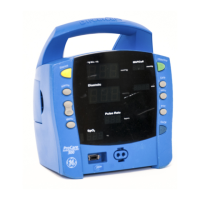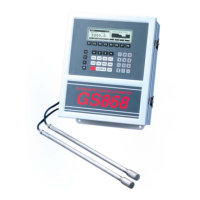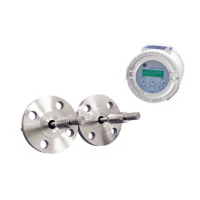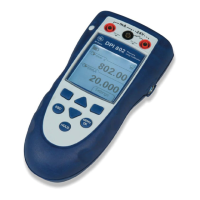Revision C DINAMAP
®
ProCare Monitor Service Manual 2-11
2009381-001
Equipment Overview: Overall Principles of Operation
Systolic Search
If systolic pressure is not found, the NIBP parameter can search at cuff pressures
higher than the initial target pressure. The parameter will inflate the cuff above
the initial target pressure to get more data in the systolic region. The maximum
pressure allowed in systolic search is limited by the normal range for cuff
pressures. In any operating mode, if a patient's systolic pressure exceeds the
inflation pressure, the parameter will begin a normal deflation sequence, detect
the absence of a systolic value, stop deflation, reinflate to a cuff pressure higher
than the initial inflation pressure, and resume the normal deflation sequence.
In any operating mode, if a patient's systolic pressure exceeds the inflation
pressure of the monitor, the Monitor will begin normal deflation sequence,
detect the absence of a systolic value, stop deflation, reinflate to a higher (than
initial) inflation pressure (290 mmHg maximum), and resume normal deflation
sequence. This additional inflation will occur only once per determination.
If a previous valid systolic pressure is displayed and less than 2 minutes old, and
the new systolic pressure oscillations are compared with the previous valid
determination and the Monitor "thinks" that the systolic was not obtained, the
Monitor will inflate the cuff to a pressure of an additional 50 mmHg above the
immediately preceding inflation. This additional inflation will occur only once per
determination.
Reference Used to Determine NIBP Accuracy
To establish accuracy of an NIBP device, manufacturers have used several
different types of references. The reference blood pressures may be obtained by
invasive pressure monitoring at the central aortic region or at the radial sites.
The reference blood pressures may also be obtained by noninvasive methods
like auscultatory method (using cuff and stethoscope).
NOTE:For neonatal populations, the reference is always the intra-arterial
pressure monitoring method.
DINAMAP
®
Monitors With Intra-Arterial Reference
(DINAMAP
®
Classic Technology) – For these monitors, the NIBP is referenced to
the invasive blood pressure obtained at the central aortic region.
DINAMAP
®
Monitors With Auscultatory Reference
(DINAMAP
®
Auscultatory Technology) – In these monitors, the reference blood
pressure is the auscultatory method for adult and pediatric populations. For
neonatal populations, the reference is the invasive blood pressure obtained at
the central aortic region.
CAUTION
Do not use an infant cuff with an auscultatory reference
DINAMAP
®
ProCare Monitor. The neonatal #5 cuff and neonatal
hose may be used on patients with an arm circumference of
8 - 15 cm.

